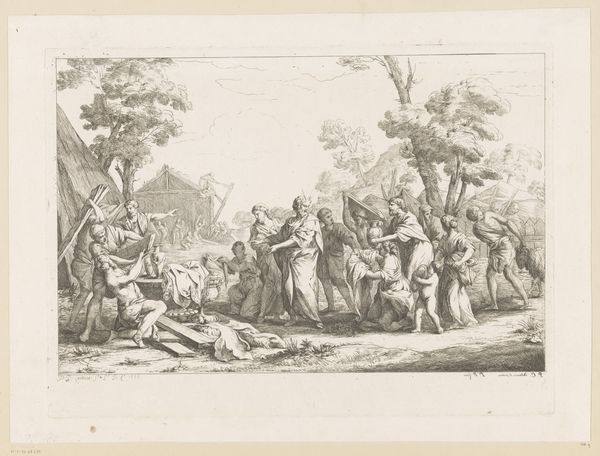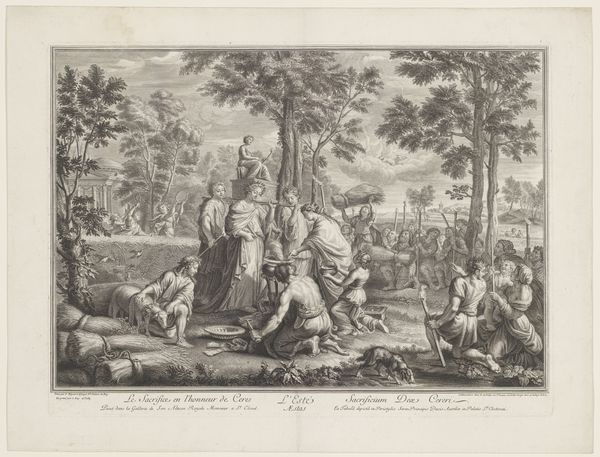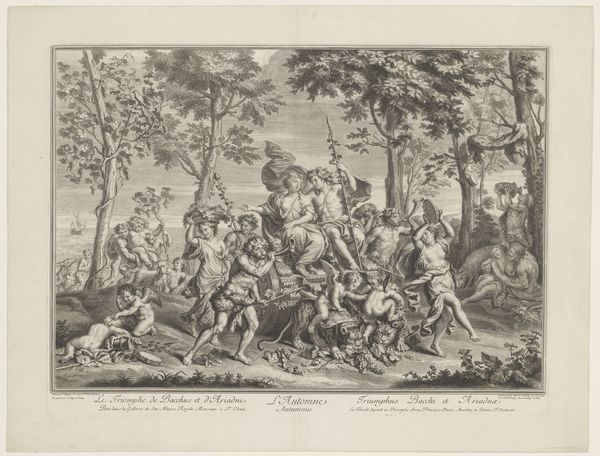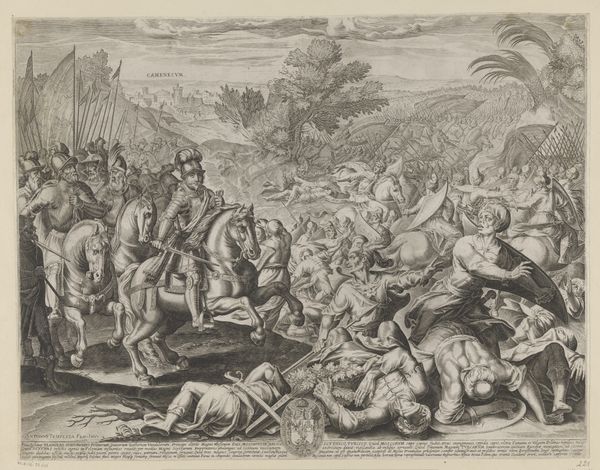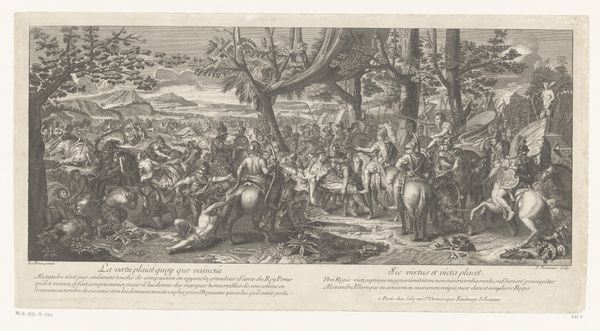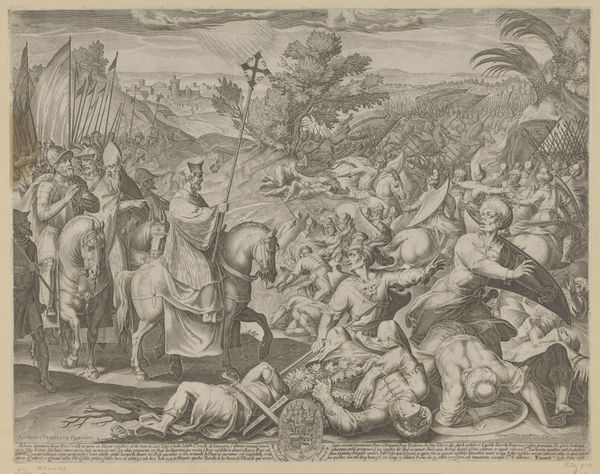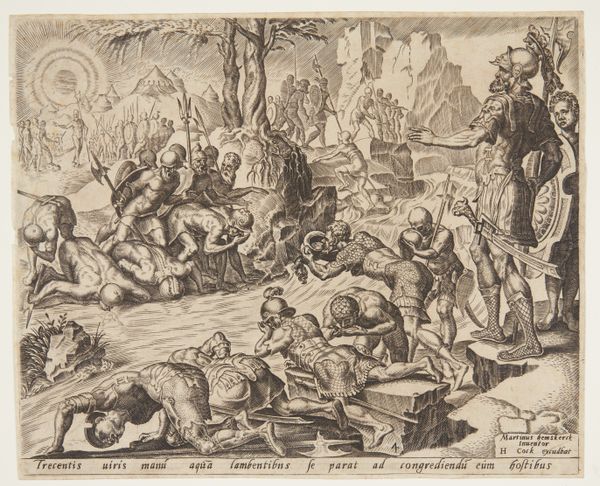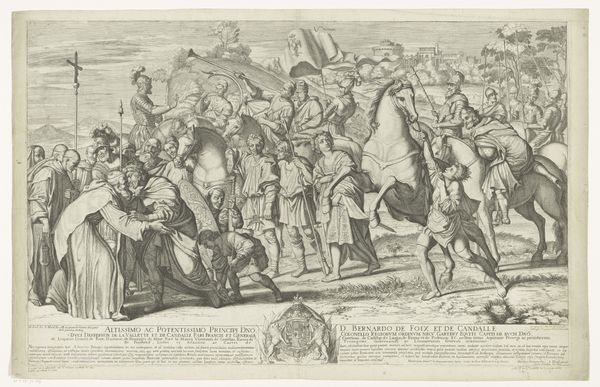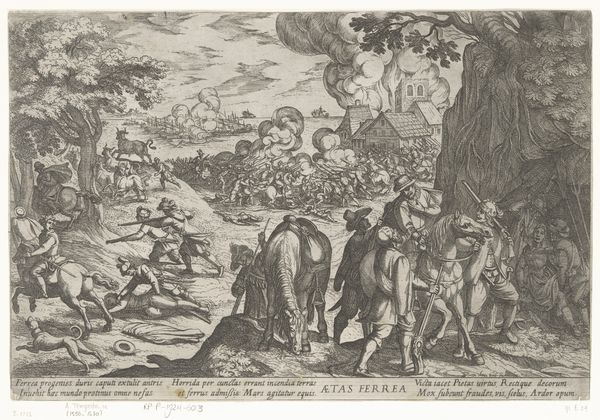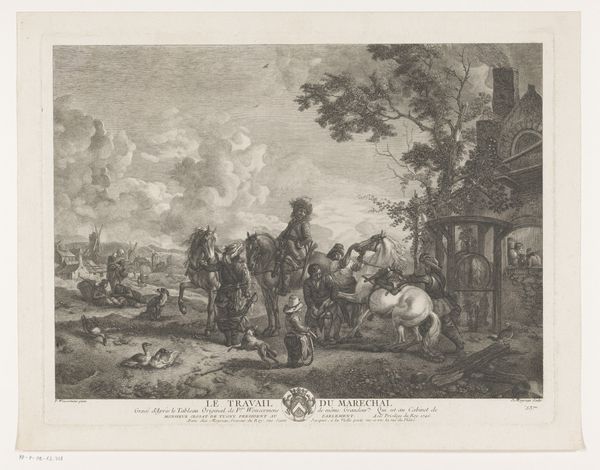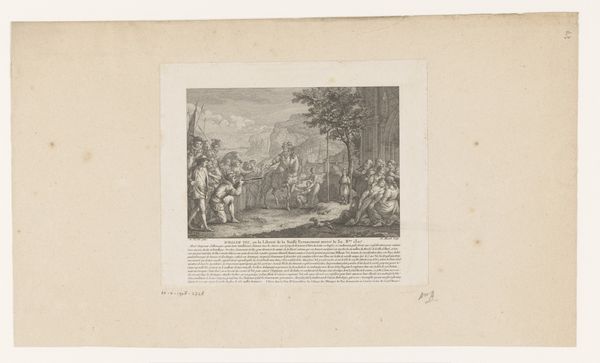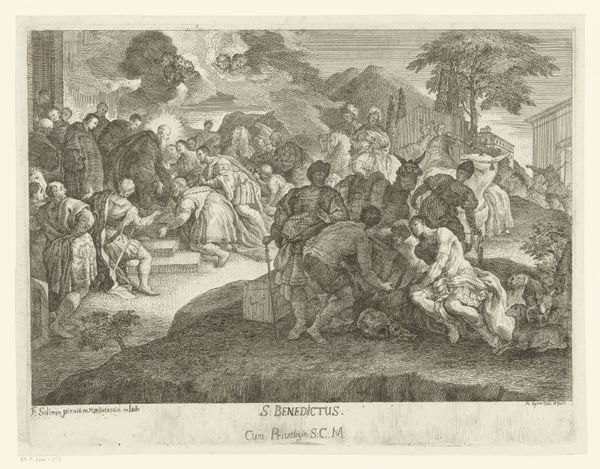
print, engraving
#
narrative-art
#
baroque
# print
#
old engraving style
#
landscape
#
figuration
#
history-painting
#
engraving
Dimensions: height 325 mm, width 449 mm
Copyright: Rijks Museum: Open Domain
Curator: Today we're looking at "Verzamelen van het manna in de woestijn," an engraving executed sometime between 1639 and 1695. Editor: My first thought is, what a detailed yet desolate scene. The composition almost feels overwhelming, yet balanced in its asymmetry. Curator: The Baroque aesthetic is certainly on display here. Look at the swirling composition, the figures arranged almost in a vortex, and the expressive gesturing. There’s a real dynamism created by the contrast between the rocky landscape and the pleading figures. Editor: And thinking materially, you have to consider the labor involved in creating all those fine lines, meticulously carving into the metal plate. Engravings such as this one were critical for distributing images. What was the role of the printmaker? Curator: The artist, Henri Testelin, certainly captures the dramatic narrative—the miraculous provision of manna. There's a clear focal point on the grateful recipients, contrasting with the stark surroundings, and, from a semiotic standpoint, they really underscore God's provision amidst scarcity. Editor: Yes, there is indeed a tension between luxury and hardship represented here. We must remember the broader context—these prints could become tools to discuss access to goods and resources amongst different social groups. Curator: Looking closely at the detail, notice the deliberate variations in line thickness to simulate texture and depth. This plays with perspective and suggests vastness. Editor: Ultimately, this piece speaks volumes about human relationships, production, and storytelling during a certain period. Thank you for unveiling so many aspects of materiality! Curator: Yes, the visual analysis makes this history so much more palpable.
Comments
No comments
Be the first to comment and join the conversation on the ultimate creative platform.
